When switched to AFNetworking 2.0 the AFHTTPClient has been replaced by AFHTTPRequestOperationManager / AFHTTPSessionManager (as mentioned in the migration guide). The very first issue I came across when using the AFHTTPSessionManager is how to retrieve the body of the response in the failure block?
Here's an example:
[self.sessionManager POST:[endpoint absoluteString] parameters:params success:^(NSURLSessionDataTask *task, id responseObject) {
// How to get the status code?
} failure:^(NSURLSessionDataTask *task, NSError *error) {
// How to get the status code? response?
}];
In the success block I would like to retrieve response's status code. In the failure block I would like to retrieve both response's status code and the content (which is JSON in this case that describes the server-side error).
The NSURLSessionDataTask has a response property of type NSURLResponse, which has not statusCode field. Currently I'm able to retrieve statusCode like this:
[self.sessionManager POST:[endpoint absoluteString] parameters:params success:^(NSURLSessionDataTask *task, id responseObject) {
// How to get the status code?
} failure:^(NSURLSessionDataTask *task, NSError *error) {
NSHTTPURLResponse *response = (NSHTTPURLResponse *)task.response;
DDLogError(@"Response statusCode: %i", response.statusCode);
}];
But this looks ugly to me. And still can't figure about the response's body.
Any suggestions?
